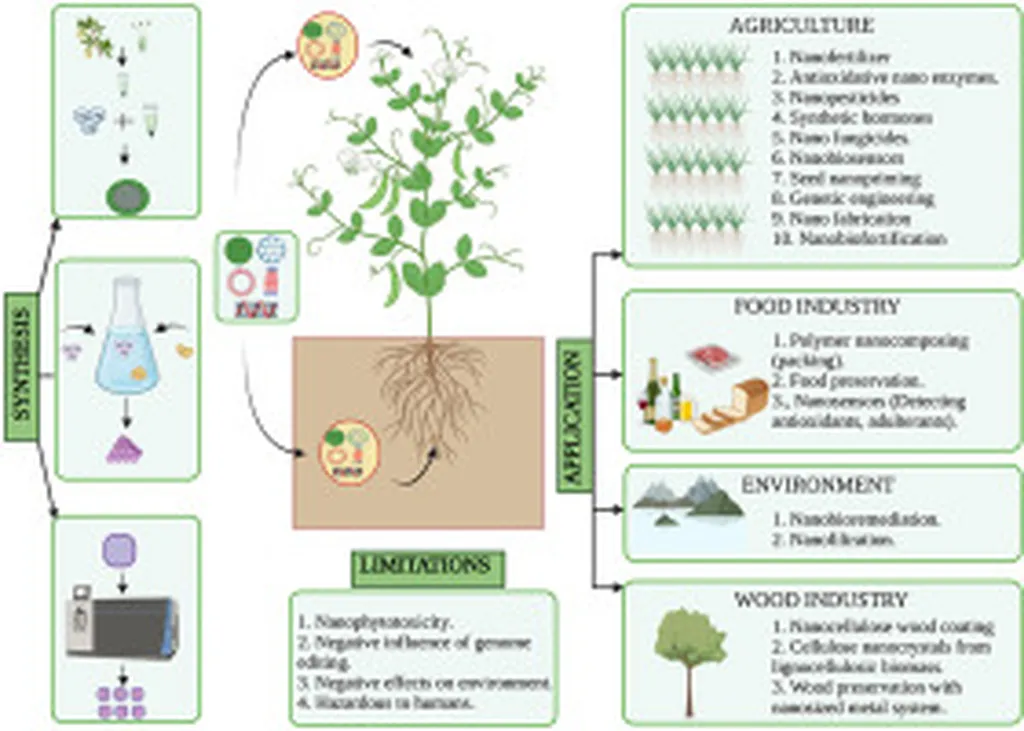In the heart of Kerala, India, a team of researchers led by Baboose Sunny from the Postgraduate and Research Department of Chemistry at Mar Athanasius College has made a significant stride in the realm of sustainable agriculture. Their work, published in the journal ‘Results in Surfaces and Interfaces’ (which translates to ‘Results in Materials and Surfaces’ in English), explores the green synthesis of iron oxide nano/submicron particles (Fe2O3-NSMP) using the fruit extract of Morinda citrifolia, commonly known as the Indian mulberry. This innovative approach not only offers a sustainable alternative to conventional chemical methods but also opens up new avenues for antimicrobial and agricultural applications.
The traditional reliance on chemical pesticides and fertilizers has long been a double-edged sword, boosting agricultural productivity while simultaneously posing significant environmental and health risks. Sunny and his team aimed to address this challenge by harnessing the power of green chemistry. “Our goal was to develop a sustainable and eco-friendly method for synthesizing iron oxide nanoparticles that could serve multiple purposes in agriculture,” Sunny explained.
The synthesis process is as straightforward as it is eco-friendly. The team used the fruit extract of Morinda citrifolia as a natural reducing agent to produce Fe2O3-NSMP. The particles were then characterized using a suite of advanced techniques, including X-ray diffraction, Fourier-transform infrared spectroscopy, and electron microscopy. The results were promising, revealing particles with enhanced functionality and multifaceted applications.
One of the most compelling aspects of this research is its potential to combat salinity stress in crops. Salinity is a major abiotic stress factor that adversely affects plant growth and productivity. To test the efficacy of their synthesized Fe2O3-NSMP, the team primed cowpea seeds with the particles and exposed them to salinity stress. The results were remarkable. The primed seeds exhibited elevated levels of various metabolites, including sugars, amino acids, phenolics, and proline, as well as non-enzymatic antioxidants like ascorbate and glutathione. These metabolites play a crucial role in enhancing stress tolerance, ultimately leading to improved crop resilience and productivity.
The antimicrobial properties of the Fe2O3-NSMP were also evaluated, showing effectiveness against both gram-positive and gram-negative bacteria. This dual functionality—antimicrobial and stress tolerance enhancement—makes these nanoparticles a versatile tool in the agricultural toolkit.
The implications of this research are far-reaching. As climate change continues to pose new challenges to agriculture, the need for sustainable and innovative solutions has never been greater. The green-synthesized Fe2O3-NSMP offer a promising avenue for enhancing crop resilience and productivity, potentially revolutionizing the way we approach agricultural sustainability.
Moreover, the commercial impacts of this research could be substantial. The energy sector, which often intersects with agriculture in the form of biofuels and other agricultural byproducts, stands to benefit from more resilient and productive crops. The use of green-synthesized nanoparticles could also reduce the environmental footprint of agricultural practices, aligning with the growing demand for sustainable and eco-friendly solutions.
As we look to the future, the work of Sunny and his team serves as a beacon of hope and innovation. Their research not only addresses current challenges but also paves the way for future developments in the field of sustainable agriculture. “This is just the beginning,” Sunny remarked. “The potential applications of these nanoparticles are vast, and we are excited to explore them further.”
In a world grappling with the impacts of climate change and environmental degradation, the green synthesis of multifunctional nanoparticles offers a glimmer of hope. It is a testament to the power of innovation and the potential of sustainable solutions to transform the way we interact with our environment. As we continue to face the challenges of the 21st century, research like this reminds us that the answers to our most pressing problems often lie in the natural world around us.

